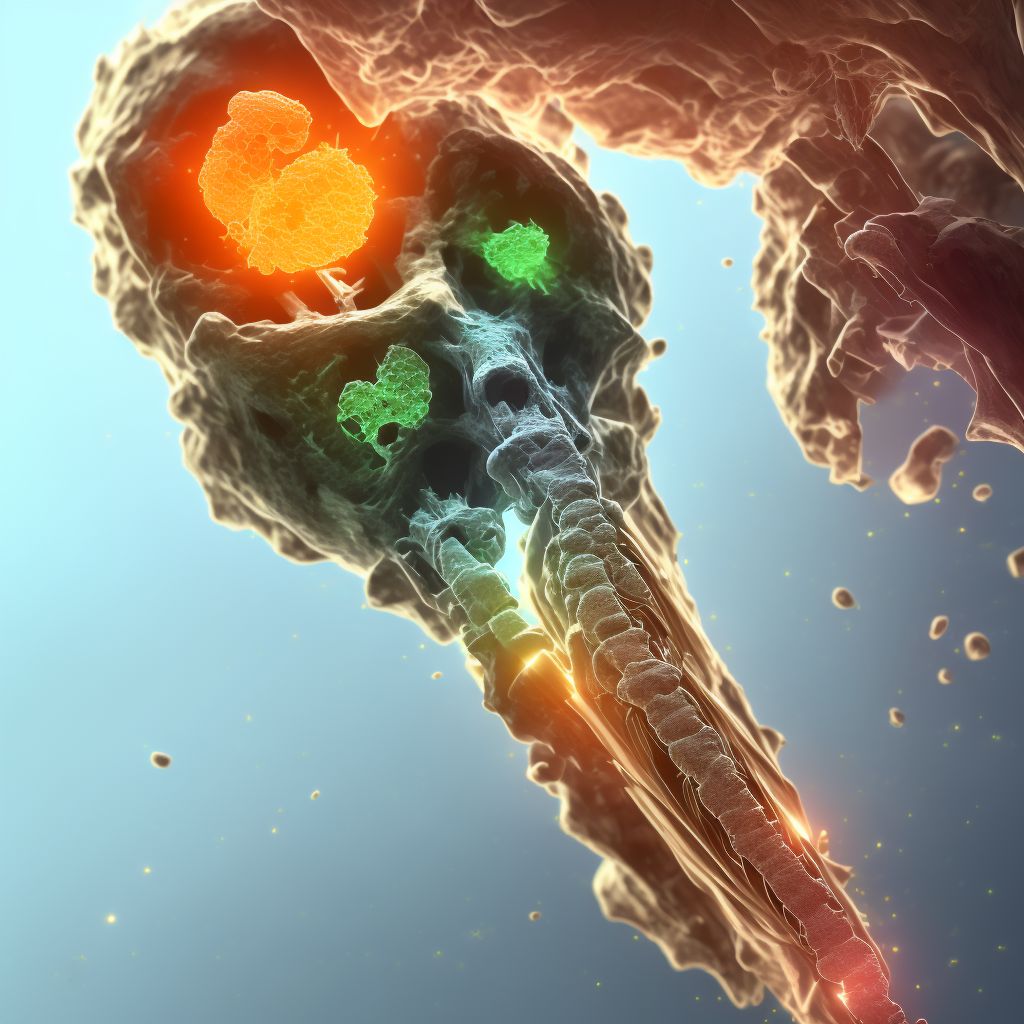
Unspecified fracture of lower end of left tibia, subsequent encounter for open fracture type IIIA, IIIB, or IIIC with malunion Save
ICD-10 code: S82.302R
Disease category: S82.302: Unspecified fracture of lower end of left tibia
Understanding Unspecified Fracture of Lower End of Left Tibia with Malunion
An unspecified fracture of the lower end of the left tibia can result in various complications, including malunion. This refers to the improper alignment of fractured bone ends during the healing process. Subsequent encounters for open fracture type IIIA, IIIB, or IIIC are common in such cases, indicating the need for ongoing medical attention and care.
When an individual sustains an unspecified fracture of the lower end of the left tibia, it means that the exact location and severity of the fracture are not specified. This type of injury can occur due to various factors, such as trauma, accidents, or excessive stress on the bone.
During the healing process, malunion may occur if the fractured bone ends do not align correctly. This can lead to a range of complications, including pain, limited mobility, deformity, and potential long-term functional impairments.
Subsequent encounters for open fracture type IIIA, IIIB, or IIIC indicate that the patient has already received initial medical treatment for an open fracture with various degrees of soft tissue damage. These encounters are crucial for monitoring the progress of healing, managing any complications, and ensuring optimal recovery.
- Pain Management: One of the primary focuses during subsequent encounters is pain management. Healthcare professionals may prescribe pain medications or recommend non-pharmacological pain relief techniques.
- Monitoring Healing Progress: Regular check-ups and imaging tests help assess the healing progress of the fracture. X-rays or other imaging techniques may be used to evaluate bone alignment and identify any signs of malunion.
- Physical Therapy: Depending on the severity of the malunion and associated functional impairments, physical therapy may be recommended to improve mobility, strength, and flexibility of the affected leg.
It is important to note that this article does not provide specific treatment recommendations. The treatment plan for an unspecified fracture of the lower end of the left tibia with malunion should be determined by a qualified healthcare professional based on individual circumstances and requirements.
In conclusion, an unspecified fracture of the lower end of the left tibia with malunion requires ongoing medical attention. Subsequent encounters for open fracture type IIIA, IIIB, or IIIC are essential for monitoring healing progress, managing complications, and ensuring optimal recovery.
Treatment of Unspecified fracture of lower end of left tibia, subsequent encounter for open fracture type IIIA, IIIB, or IIIC with malunion:
Treatment Options for 'Unspecified Fracture of Lower End of Left Tibia, Subsequent Encounter for Open Fracture Type IIIA, IIIB, or IIIC with Malunion'
When it comes to the treatment of an unspecified fracture of the lower end of the left tibia with malunion, it is crucial to consider the severity of the fracture and the individual patient's condition. Here are some treatment option...
To see full information about treatment please Sign up or Log in